
by logisticsplus | Feb 19, 2020 | News
 In order to effectively manage your freight spend, it’s important to understand the different pricing options you have when negotiating freight rates. Both contract rates and spot rates offer a different value proposition, and one is not always better than the other. The only way to gain full control over your freight spend lies in finding the perfect balance between the two and knowing when to utilize them. Here are some benefits and shortfalls for both freight pricing options.
In order to effectively manage your freight spend, it’s important to understand the different pricing options you have when negotiating freight rates. Both contract rates and spot rates offer a different value proposition, and one is not always better than the other. The only way to gain full control over your freight spend lies in finding the perfect balance between the two and knowing when to utilize them. Here are some benefits and shortfalls for both freight pricing options.
Contract Rates
A contract rate is the rate a motor carrier, freight broker or logistics provider agrees to use when moving a shipper’s freight in a set lane over a specific period of time. Contract rates have a fixed term, typically one year, and they offer the security of both price and capacity. While many shippers use contract rates, they can be a gamble depending on how the market shifts. Carriers get stuck with cheap loads when the market is high but they can profit big when the market is down.
Spot Rates
A spot rate is the price a freight service provider offers a shipper at any given time to move their shipment from Point A to Point B. Spot rates are based on market conditions at the time you are quoted for an immediate settlement of a service (in this case shipping). Since spot rates follow the fundamental concept of supply and demand, an increase in capacity will lower prices, while a decrease in capacity will raise prices. Like contract rates, exclusively using spot rates is a gamble depending on the market conditions at the time of your shipment.
Finding The Perfect Balance
Being able to assess freight pricing by reviewing the current market and setting expectations for the coming days or weeks is hard to do. The best way shippers can find a balance between contract rates and spot rates is to keep tabs on the current market rates while taking advantage of existing contracts when appropriate. Typically, contract freight rates are the preferred method of pricing for higher volume shippers because it locks in a price and sets expectations for a high level of service.
In order to effectively manage your freight spend, it’s important to find the perfect balance between contract rates and spot rates. If you’re still confused about what pricing option works best for you, contact us today for a free freight analysis.

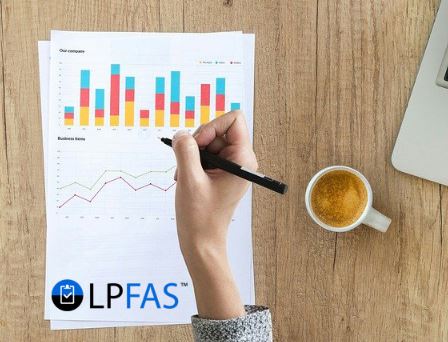
by logisticsplus | Jan 28, 2020 | News
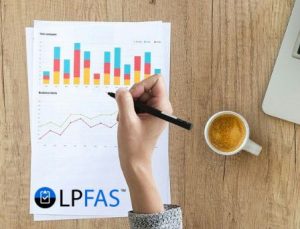 As freight rates become increasingly complex due to changing fuel surcharges, accessorials and discounts, it’s easy for freight carriers to make mistakes on their invoices. To solve this problem, freight bill auditing is used to capture lost revenue from errors or inaccuracies with freight invoicing. Although it may seem like a cumbersome task to shippers, there are many cost-saving benefits to implementing a freight bill auditing program.
As freight rates become increasingly complex due to changing fuel surcharges, accessorials and discounts, it’s easy for freight carriers to make mistakes on their invoices. To solve this problem, freight bill auditing is used to capture lost revenue from errors or inaccuracies with freight invoicing. Although it may seem like a cumbersome task to shippers, there are many cost-saving benefits to implementing a freight bill auditing program.
The Most Common Freight Bill Errors
- Shipper Inaccuracy: When the staff processing the shipment makes a mistake, it causes the carrier to obtain inaccurate information for the shipment (e.g., giving the wrong dimensions or freight class).
- Detention Fees: Inaccurate detention fees are common on freight bills. A detention fee is charged when the shipper exceeds the allotted time frame allowed for a pickup or delivery.
- Accessorial Charges: Because there are so many different accessorial services and fees, it’s easy for a carrier to charge the shipper for an extra accessorial that they didn’t ask for (e.g., lift-gate or notify before delivery).
Ways To Keep Freight Auditing Under Control
- Prior to tendering a shipment, always reweigh it to ensure your freight carrier or transportation management system (TMS) has the proper information it needs to give you an accurate quote.
- Stay up-to-date with the individual carrier processes for submitting invoice corrections. Methods by each carrier vary and it is best to have each process documented and understood.
- Review each invoice to make sure that all data matches the original shipment details. This includes the pickup date, delivery confirmation, weight, dimensions, freight class, etc.
- Outsource your freight bill auditing to a third-party logistics (3PL) company. Logistics Plus Freight Audit Solutions (LPFAS) incorporates a comprehensive 3-point check to ensure that your small pack, parcel, LTL, truckload, and international invoices are accurate, disputed when necessary, and adjustments are made when needed (including “claw-back” refunds on small package shipments for missed guarantees, non-tendered shipments, etc.).
Shippers that don’t have a freight audit program in place are losing money every day. If you’re tired of fighting invoice discrepancies and mistakes that are costing you money, contact us today.

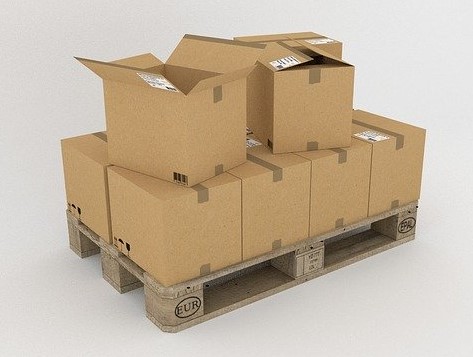
by logisticsplus | Jan 22, 2020 | News
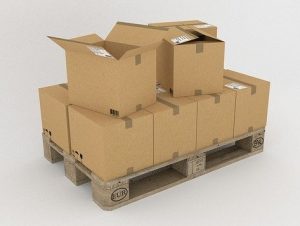 Less-than-truckload (LTL) freight consolidation is a freight strategy that involves combining multiple LTL shipments – all with a common destination – into a full truckload and then shipping it to its final destination. Simply put, rather than shipping direct from the origin to destination with multiple LTL shipments and/or carriers, the shipper is sending all of its freight at once to the final destination. Here are some benefits that LTL freight consolidation offers:
Less-than-truckload (LTL) freight consolidation is a freight strategy that involves combining multiple LTL shipments – all with a common destination – into a full truckload and then shipping it to its final destination. Simply put, rather than shipping direct from the origin to destination with multiple LTL shipments and/or carriers, the shipper is sending all of its freight at once to the final destination. Here are some benefits that LTL freight consolidation offers:
- Pricing simplicity: Receive one quote for a full truckload rather than multiple LTL quotes.
- Improved transit times: Dedicated truckloads mean that all your freight will arrive to the same place at the same time.
- Better shipment transparency: Rather than tracking multiple LTL shipments, focus on one single load.
- Fewer carrier interactions: Fewer carriers means less hassle and interaction.
- Reduced accessorial charges: Rather than paying for the same accessorial on each LTL shipment, only pay them once.
- Increased service levels: A single point of contact and lowered risks due to less handling of the goods.
- Sustainable shipping practices: The carbon footprint is reduced with consolidations since fewer trucks are being used.
Consolidation involves more than just keeping your number of shipments down; LTL freight consolidation represents an opportunity for shippers to find more efficient and cost-effective solutions. However, to freight consolidation does require a higher-level of planning and forecasting within your supply chain. If you are an emerging brand or a small to mid-sized business, a third-party logistics provider can potentially help you combine your LTL shipments that are moving to common destinations.
If you find yourself frequently sending LTL shipments to the same location, contact us today to find out whether freight consolidation is possible for you. If you’d simply like a quote on your next shipment, click the button below.

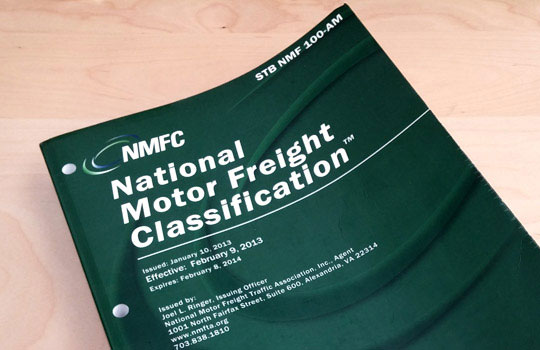
by logisticsplus | Jan 2, 2020 | News
 Please see the latest supplement to the National Motor Freight Classification (NMFC®) by the Commodity Classifications Standards Board (CCSB). These changes have an effective date of 1/4/2020. A few of the notable changes are listed below.
Please see the latest supplement to the National Motor Freight Classification (NMFC®) by the Commodity Classifications Standards Board (CCSB). These changes have an effective date of 1/4/2020. A few of the notable changes are listed below.
- Drugs, Chemicals, Medicines and Other Articles Named — Item 60000, RVNX $3.35 per lb, class 70. Item 60000 is canceled with reference to the provisions that are otherwise applicable. The classes shown in these individual items will be applicable. The references to item 60000 are removed from the following NMFC items. 12540 12980 21420 21520 21540 21640 23420 42460 42470 42620 42647 42648 42740 42780 42790 42800 42850 42890 42920 42980 42990 43000 43140 43180 43200 43210 43230 43260 43490 43510 43540 43560 43580 43590 43610 43660 43680 43770 43850 43940 43950 43980 44040 44060 44070 44110 44170 44225 44230 44320 44380 44460 44480 44520 44550 44610 44650 44680 44690 44700 44720 44760 44810 44830 44855 44867 44900 44910 45000 45040 45050 45060 45090 45120 45260 45325 45380 45400 45410 45420 45465 45480 45680 45710 45750 45790 45800 45870 45880 45930 46000 46023 46040 46045 46060 46160 46170 46190 46200 46270 46290 46340 46350 46400 46480 46530 46580 46610 46620 46660 46720 46780 46820 46840 46920 46930 47010 47030 47040 47050 47070 47100 47110 47120 47130 47140 47150 47210 47370 47400 49983 50020 50023 50155 50175 56660 56996 57100 58520 58540 58542 58560 58610 58670 58710 58770 58820 58900 58920 58960 59040 59070 59080 59090 59100 59140 59200 59250 59260 59270 59300 59310 59380 59460 59480 60260 60280 63590 64400 72120 72620 72860 73200 74030 75480 75490 75550 90930 91140 91160 91180 91200 91220 91240 91260 91380 91400 91420 91440 91480 91500 91520 91540 91560 91780 99820 111180 135380 135530 136040 136140 138360 144640 144660 144700 144780 144940 162870 163030 169320 169340 171410 172180 172990 173740 178720 179960 196580 196600 196640 196720 196760 196860. Concurrently, Notes, items 60002 and 60004 are canceled with no further application.
- Foodstuffs, other than frozen. Various foodstuffs are removed from item 73227 and reclassified. Item 72790 (Dips) is canceled with reference to new item 74700 (Sauces, Condiments, Dips or Spreads). New items are established as follows: 72030 (Baby Food), 72041 (Baking Powder), 72285 (Butters or Spreads, nut or seed, including Peanut Butter),74510 (Purees, fruit or vegetable, including applesauce) and 74737 (Shells, taco, or tortillas).
- Ovens, Ranges or Stoves, cooking, indoor, and Related Cooking Equipment. Items 27320, 27430, 27440 and 27450 are canceled with reference to new item 26720 for “Ovens, Ranges or Stoves, cooking, and Related Cooking Equipment, electric or gas,” with classes based on a density break at 8 pcf. Item 26720 references new Note, item 26721, which requires articles weighing each greater than 110 pounds to be tendered in authorized packages secured on a lift truck skid, pallet or platform. Item 26710 is amended to restrict its application to “Ovens, NOI, other than cooking.” Item 27590 is canceled with reference to new item 26720 and, for commercial or institutional broilers, cookers or steamers, fryers (deep fryers) and griddles, to new item 25970, the latter with no change in packaging or classes. As modified, reference to indoor type in item 26720 applies only to stoves, stovetops, cooktops or grills, and the restrictive terminology, “other than cooking,” is added to item 27520 for gas stoves or ranges.
- Posts or Poles, utility, including Lighting, Telephone or Electric Railway Posts or Poles, or Sections thereof. Items 161150, 161160, 161170, 161180, 161200, 161210, 161220 and 161240 are canceled with reference to new item 161145, naming “Posts or Poles, utility, including Lighting, Telephone or Electric Railway Posts or Poles, or Sections thereof,” with classes predicated on greatest dimension and density. New Notes 161146 and 161148 are established to clarify the application of the item and provide additional packaging requirements, respectively. Note 109704 is amended to reflect the new provisions accordingly.
- Flashlights, Lanterns, Searchlights or Spotlights, electric, handheld — Items 109110 and 109800. Item 109110 is amended to provide class 150. As modified, item 109800 is amended to provide class 110 whether or not complement of batteries is included. Note 109112 is amended to use the word “that.” For uniformity, the term “handheld” is used in the descriptions of items 109110 and 109800.
- Pans or Pots, cast aluminum. Item 52930 is canceled with reference to item 52895, which assigns class 125. Concurrently, the description of item 52895 is amended by removal of the restriction “other than cast.”
- Oxygen, recreational, in handheld canisters or containers. New item 86070 is established for recreational oxygen, with classes based on whether or not the product is offered for transportation as a Hazard Class 2, Division 2.2 material and on density. New Notes 86071 and 86072 are established to clarify the new item’s application. Note 56911 is amended to direct the Classification user to the new item.
- Heaters, gas, other than portable. Item 26460 is amended for simplification, and class 150 is assigned.
- Heaters, electric, wall insert or baseboard type. Item 26500 is amended for clarification and simplification, and class 125 is assigned.
- Virtual Reality Headsets (VR Headsets). New item 62190 is established, naming “Headsets, virtual reality (VR Headsets),” at class 150. Additionally, new Note 62191 is established limiting the new item to VR headsets with integrated screens or monitors.
- Kilns — Items 123820, 123840 and 123860. Item 123820 is amended for clarification and simplification, to specify packaging “in boxes or crates,” and to provide classes predicated on a density break at 8 pcf. Item 123840 is amended to provide class 110. Item 123860 is canceled.
- Fireplace Grates, Grate Baskets or Grate-Type Heaters. Items 69430, 69440 and 69457 are canceled with reference to the full-scale density provisions of item 69420. Concurrently, the “viz.” listing in item 69420 is amended to include “Grates, Grate Baskets or Grate Parts,” and “Heaters, Heat Exchangers or Extractors, fireplace grate type.”
- Wood Moldings (Mouldings). Items 38030, 38040 and 38050 are canceled with reference to new item 38035, naming wood “Moldings (Mouldings), with or without coatings or coverings of other materials,” with classes predicated on greatest dimension and density. Note 38036 is established to clarify that item 38035 also applies on moldings made of wood particleboard or medium density fiberboard (MDF). Note 37612 is amended by removal of “house trim” for clarification.
- Stairs, wooden, SU or in SU sections. Item 38176 is amended to read, “Stairs, SU or in SU sections,” and the superfluous modifier “wooden” is removed. Item 38180 is likewise amended to read, “Stairs, SU or in SU sections,” with “NOI” added to the description, and reference to Note, item 37504 removed. The item is further amended to provide classes predicated on greatest dimension and density and to specify packaging “in boxes or crates.”
- Strapping, box or package, synthetic fiber or plastic. Item 179570 is amended to provide a single class 70. The packaging requirement “in boxes” is established, and the punctuation is amended in the interest of simplification.
- Traps, bullet or target. Item 17670 is canceled and reestablished as new item 187130, not subject to the Athletic Goods Group, with classes predicated on density breaks at 10 and 15 pcf, and specifying packaging “in boxes or crates.”
- Compounds, bleach assistant, NOI, and Cement, roofing, NOI. Items 50086 and 170060 are amended to remove the “bomb burst” symbol (*), add restrictive language, and refer to new attendant Notes 50087 and 170061, respectively, stating that the involved items do not apply on materials regulated by the DOT as hazardous and required to bear a Hazard Class or Hazard Division label. The Notes also direct the Classification user to other items for classes applicable to such hazardous materials.
- Garage or Commercial or Industrial Building Doors or Door Sections or Grilles. Item 34290 is amended to specifically allow accompanying motors as well as hardware or fittings, regardless of whether they are in the same or a separate package. Concurrently, Note 34291 is canceled with no further application.
- Obsolete Items or Provisions being cancelled and removed.
- 60790 – Battery Boxes, Covers or Vents, NOI
- 60810 – Battery Covers, Boxes or Vents, NOI
- 60860 – Battery Jars or Battery Jar Parts
- 60940 – Battery Sets
- 60960 – Battery Sets
- 60980 – Battery Zincs
- 79469 – Furniture, one-half scale display replicas
- 152220 – Box Straps or Strapping
Click the thumbnail image below to download a PDF copy of the full list of classification changes.
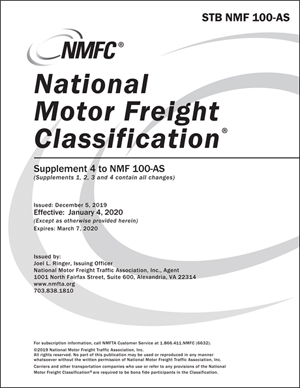
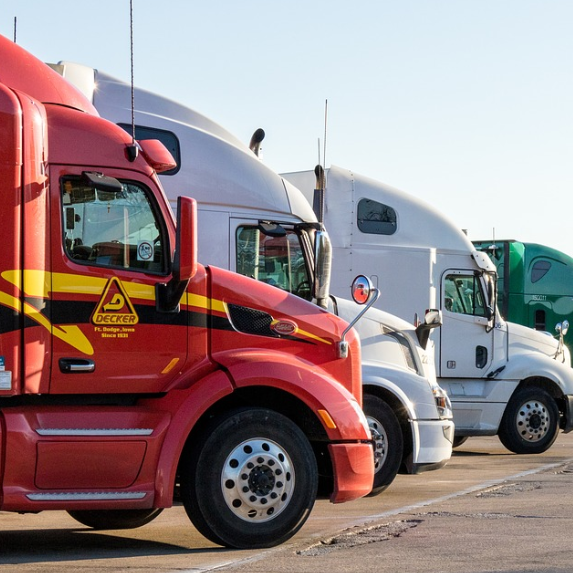
by logisticsplus | Dec 2, 2019 | News
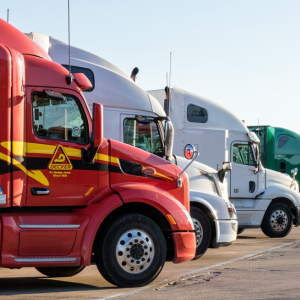 Now that peak shipping season is here, how do you decide which is the best LTL carrier for your freight? As the average demand for goods rise during peak season, shippers are forced to reconsider their shipping strategies as they look to save time and money. The continuous rise of e-commerce shopping has led to a higher demand for more less-than-truckload (LTL) shipping options. LTL freight is in a unique position in that it does not meet the criteria for a full truckload, but is also too large and expensive to ship via parcel. Rather than just selecting the first option that shows up in your Google search or on your transportation management system (TMS), here are a few tips for selecting the best LTL carrier that will meet your needs.
Now that peak shipping season is here, how do you decide which is the best LTL carrier for your freight? As the average demand for goods rise during peak season, shippers are forced to reconsider their shipping strategies as they look to save time and money. The continuous rise of e-commerce shopping has led to a higher demand for more less-than-truckload (LTL) shipping options. LTL freight is in a unique position in that it does not meet the criteria for a full truckload, but is also too large and expensive to ship via parcel. Rather than just selecting the first option that shows up in your Google search or on your transportation management system (TMS), here are a few tips for selecting the best LTL carrier that will meet your needs.
Using a TMS For The Selection Process
A modern transportation management systems leverages electronic data interchange (EDI) and application programming interfaces (API’s) to connect a TMS user with a freight quoting and scheduling system. Factors such as the amount of freight you ship can also impact the rates that appear due to special discounts or waived accessorial fees. By using a third-party logistics provider, you can instantly view rates and schedule shipments with most industry leading carriers.
Choosing The Best Carrier In The TMS
Although most transportation management systems list their lowest cost carrier options first, the first option doesn’t necessarily mean it’s the right choice for you. For example, some shippers are more interested in the transit time or safety of their products, rather than the cost. Shippers should follow the tips below when considering a less-than-truckload carrier for inbound or outbound freight:
- Don’t get too hung up with discounts and accessorials; the net price quoted should be the only number you need to know.
- Research carrier performance (or ask your 3PL for their input). Have you used any of those carriers before and did you have success with them?
- Look into the available cargo insurance offers. Do you need insurance for your shipment?
- Pay attention to transit times. How quickly do you need your shipment delivered?
- Review available guaranteed options. How important is the delivery date to you?
- Make sure the carrier offers the accessorial services you require (lift gate, residential delivery, etc.)
Making an informed decision for LTL shipping is in your best interest because the carrier you choose today may not always be the best choice tomorrow. Shippers should continuously research and consider their LTL partnerships (or work closely with a 3PL that does this for them), especially during peak holiday season as demand rises.

Page 7 of 16« First«...56789...»Last »

 In order to effectively manage your freight spend, it’s important to understand the different pricing options you have when negotiating freight rates. Both contract rates and spot rates offer a different value proposition, and one is not always better than the other. The only way to gain full control over your freight spend lies in finding the perfect balance between the two and knowing when to utilize them. Here are some benefits and shortfalls for both freight pricing options.
In order to effectively manage your freight spend, it’s important to understand the different pricing options you have when negotiating freight rates. Both contract rates and spot rates offer a different value proposition, and one is not always better than the other. The only way to gain full control over your freight spend lies in finding the perfect balance between the two and knowing when to utilize them. Here are some benefits and shortfalls for both freight pricing options.


 As freight rates become increasingly complex due to changing fuel surcharges, accessorials and discounts, it’s easy for
As freight rates become increasingly complex due to changing fuel surcharges, accessorials and discounts, it’s easy for 

 Less-than-truckload (LTL) freight consolidation is a freight strategy that involves combining multiple
Less-than-truckload (LTL) freight consolidation is a freight strategy that involves combining multiple 



 Now that peak shipping season is here, how do you decide which is the best
Now that peak shipping season is here, how do you decide which is the best